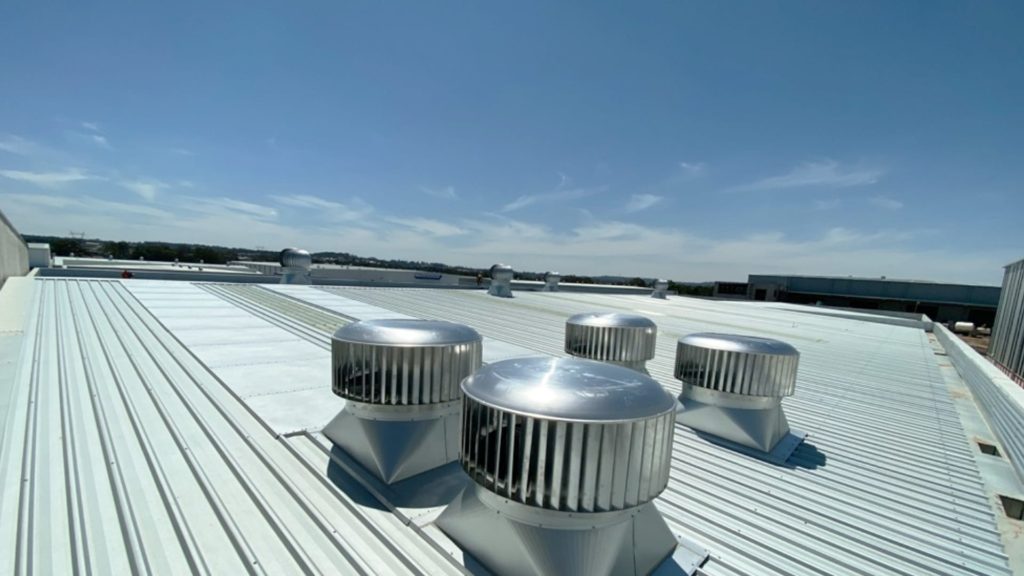Choosing the Right Commercial Roof Exhaust Fan Size: A Guide
When it comes to commercial buildings, proper ventilation is essential for maintaining a comfortable and safe indoor environment. Commercial roof exhaust fans play a crucial role in ensuring the air quality and temperature are controlled efficiently. However, selecting the right size of a roof exhaust fan is a critical decision that can significantly impact its performance and energy efficiency.
Understanding Commercial Roof Exhaust Fan Sizes
Commercial roof exhaust fans come in various sizes, and choosing the right one depends on several factors:
- Building Size: The size of the building or space you need to ventilate is one of the most crucial factors. Larger spaces require larger fans to effectively remove hot air, fumes, and odors.
- Airflow Requirements: Calculating the required airflow for your commercial space is essential. This is usually measured in cubic feet per minute (CFM). You need to know how much air needs to be exchanged to maintain a comfortable environment.
- Application: Consider the specific use of the space. For instance, a restaurant kitchen may require a different exhaust fan size compared to an industrial warehouse.
- Local Climate: Climate conditions can also impact the choice of exhaust fan size. In hot and humid regions, larger fans may be needed to remove excess heat and moisture.
- Building Height: The height of your building can affect the fan’s performance. Tall buildings may require larger fans to ensure effective air circulation.
Common Commercial Roof Exhaust Fan Sizes
Commercial roof exhaust fans are available in a wide range of sizes, typically measured in inches or millimeters for the fan’s diameter. Common sizes include 12 inches, 18 inches, 24 inches, 30 inches, and 36 inches. However, custom sizes are also available to meet specific needs.
Importance of Choosing the Right Size
Selecting the correct size of a roof exhaust fan is crucial for several reasons:
- Efficiency: An undersized fan will not effectively remove hot air and pollutants, leading to poor indoor air quality and increased energy consumption.
- Cost Savings: An oversized fan can lead to excessive energy consumption and operational costs. Choosing the right size ensures you are not wasting energy.
- Comfort: Properly sized fans ensure a comfortable and safe environment for employees and customers, regardless of the building’s purpose.
- Longevity: The correct fan size will also extend the lifespan of the equipment, reducing maintenance and replacement costs.
Consultation with Experts
To determine the appropriate commercial roof exhaust fan size for your specific needs, it is advisable to consult with ventilation experts or HVAC professionals. They can conduct a thorough assessment of your building and ventilation requirements, considering factors such as local codes and regulations.
In conclusion, choosing the right size of a commercial roof exhaust fan is a critical decision that impacts both indoor air quality and energy efficiency. By considering factors like building size, airflow requirements, and climate conditions, you can make an informed choice that ensures optimal ventilation in your commercial space while minimizing operational costs.
Commentary
The article sheds light on the importance of selecting the correct size for commercial roof exhaust fans, a topic often overlooked but crucial for the efficiency and functionality of commercial buildings. Ventilation is paramount, especially in large commercial spaces, as it affects indoor air quality, temperature control, and overall occupant comfort.
The article effectively highlights the key factors to consider when choosing the right exhaust fan size, such as building size, airflow requirements, application, local climate, and building height. These considerations underscore the complexity of the decision-making process, emphasizing the need for professional guidance.
Moreover, it’s worth noting that while standard sizes are readily available, the article acknowledges the importance of custom sizes to meet unique ventilation needs. This flexibility is particularly valuable for businesses with specialized requirements.
Additionally, the article emphasizes the significant consequences of making the wrong choice regarding fan size. Oversized fans can lead to excessive energy consumption and operational costs, while undersized fans compromise indoor air quality and comfort. These consequences underscore the financial and operational benefits of investing time and resources in selecting the right exhaust fan size.
In conclusion, the article serves as an informative guide for commercial property owners and managers, highlighting the critical importance of choosing the correct size of commercial roof exhaust fans. It emphasizes the need for professional consultation and the potential cost savings and comfort improvements that can be achieved by making informed decisions in this often-overlooked aspect of building ventilation.

